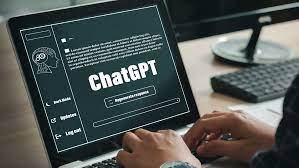Artificial intelligence may not have eyes, but it’s already reading more books than any human ever could. Yet the real question isn’t about volume—it’s about depth. Can ChatGPT be trained to read better? And can everyday users help it do that?
The answer is yes—if you know how to prompt with purpose.
OpenAI’s ChatGPT is not a mind. It doesn’t read like a person, doesn’t highlight texts with red pens or ponder over metaphors. What it does is predict words based on patterns. But with consistent, intentional interaction, users can shape how ChatGPT interprets, analyzes, and reflects on reading material.
This is the core of what tech insiders are calling “soft training”—prompt-based personalization that helps the AI adapt to your reading goals.
From Text Processor to Thought Partner
At first glance, ChatGPT might appear to be just a faster way to summarize text or answer questions. But used wisely, it becomes a thought partner—an interactive reader that helps you break down complex ideas, explore multiple interpretations, and even challenge your assumptions.
The key? You need to ask the right questions. Below are tested prompt structures tailored for two types of users: literary explorers and STEM learners.
For Literary Enthusiasts: Dive Deeper into Texts
Whether you’re reading Chinua Achebe, Chimamanda Adichie, or Shakespeare, these prompts will help ChatGPT unpack the deeper layers of literature—theme, tone, symbolism, structure, and context.
Understanding Plot and Theme
“What is the main conflict in this story, and how does it drive the plot?”
“Summarize this chapter in 3 bullet points focused on character development.”
“What moral or philosophical questions does this text raise?”
Analyzing Style and Language
“Identify and explain three literary devices used in this paragraph.”
“How does the author’s choice of diction affect the tone?”
“Rewrite this passage in simpler language without changing the mood.”
Exploring Context and Meaning
“What historical or cultural context is important to understanding this work?”
“Compare this author’s message with another novel that covers similar themes.”
“What might the symbolism of the [object/event] represent in this passage?”
Challenging the Reader
“Play devil’s advocate—what criticisms might someone have of this book’s message?”
“If this story were written today, how might it change?”
“Generate three discussion questions I can use for a book club on this story.”
For STEM Learners: Break Down Complexity
For students and professionals grappling with math, physics, or engineering, ChatGPT can be a guide—explaining step-by-step logic, clarifying formulas, and simplifying abstract concepts into real-world analogies.
Understanding Concepts
“Explain Kirchhoff’s laws in electrical circuits in simple terms.”
“What is the intuition behind eigenvalues and eigenvectors?”
“How does Bernoulli’s principle apply to aircraft lift?”
Step-by-Step Problem Solving
“Walk me through solving this differential equation step by step: dy/dx + 3y = 6.”
“I’m stuck on this statics problem—how do I calculate the reaction forces at a fixed support?”
“Convert this real-world piping problem into a solvable equation.”
Interpreting Graphs and Results
“Explain what this stress-strain curve tells us about the material.”
“How do I interpret the Bode plot for this frequency response?”
“What are the practical implications of this result in engineering design?”
Real-World Application and Visualization
“Give a real-world example where Laplace transforms are useful.”
“Can you create an analogy to explain how feedback control works?”
“Simulate this thermodynamics concept with a cooking or car engine example.”
Case Studies: Using ChatGPT as a Critical Reader
Across Nigeria and beyond, creative use cases are emerging:
EduBot AI, a Nigerian edtech startup, uses ChatGPT to simulate literature class debates. Students upload short stories, and the bot responds as different characters.
A cohort of creators on Substack feeds their drafts into ChatGPT, not for rewriting, but for critical feedback, asking it to question logic, tone, or flow.
Youth-focused platforms like SkillUp Africa integrate ChatGPT into reading clubs, where it generates discussion prompts and multiple interpretations of local novels.
Strategy: Teaching ChatGPT to Think (Critically)
Want to train ChatGPT to “read better”? Follow these steps:
Define the reading goal. Are you summarizing, critiquing, or discussing? Tell it upfront.
Break the task into parts. Ask for theme, then plot, then tone. Layer the learning.
Review and give feedback. Say when it’s wrong. Reward when it’s right.
Ask it to revise. “Rewrite that summary to include the author’s emotional stance.”
Build continuity. Keep the chat going. The longer the conversation, the smarter the insights.
Talking Points
In a country where education resources are stretched thin, ChatGPT offers something rare: a patient, adaptive reading tutor that never gets tired.
With 33 million smartphone users in Nigeria, even modest access could redefine how students prepare for WAEC, university entrance, or just personal growth.
However, without guidance, ChatGPT is just another search engine. The key lies in how you interact with it. If used only for copying homework, its power is wasted.
But as a tool for reflection, critique, and inquiry, its potential in education, especially in Africa is unmatched.





